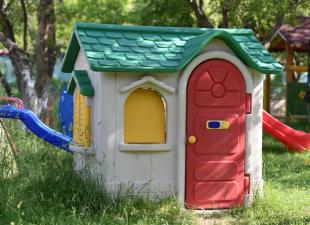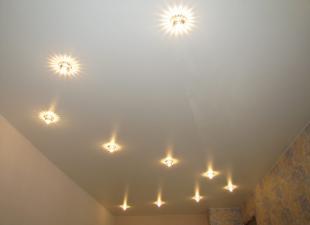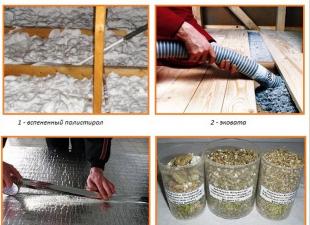The ability of ultraviolet radiation to effectively fight many microorganisms was most fully disclosed in the second half of the twentieth century. In those years, along with the rapid development of artificial light sources, scientists managed to make a number of discoveries, thanks to which ultraviolet light penetrated into various spheres of human life. Today, buying a UV lamp is as easy as buying any other lighting fixture. The features of lamps operating in the violet range, their types and scope will be discussed in this article.
Varieties
The sun is the source of natural UV electromagnetic radiation. The power of its short-wavelength rays is quite high, but most of them are absorbed by the earth's atmosphere. Only long-wave ultraviolet light reaches the surface of the earth and less than 10% of the mid-range rays. In general, the entire UV spectrum is divided into three ranges:
- long wavelength (UVA) - 400-315 nm;
- medium wave (UVB) - 315-280 nm;
- shortwave (UVC) - 280-100 nm.
Each of them has a unique photobiological effect, which affects the field of application. The most common source of artificial ultraviolet radiation is fluorescent lamps. By choosing the chemical composition of the glass bulb and sputtering, excellent wave transmission capacity in a narrow spectrum can be achieved. UV fluorescent lamps manufactured today have dozens of types, different in shape and purpose. Along with fluorescent lamps, they contain mercury, which is their disadvantage.
Philips has achieved the greatest success in the field of fluorescent light sources. For example, a lamp for air disinfection of the TUV-15W-G15-T8 type has a maximum radiation of 253 nm. This wavelength is most efficiently absorbed by the DNA molecules of most microorganisms, thereby destroying them.  A feature of this Philips model is the presence of negligible radiation in the violet and green spectrum (no more than 5%), which allows the user to see the light of the working lamp.
A feature of this Philips model is the presence of negligible radiation in the violet and green spectrum (no more than 5%), which allows the user to see the light of the working lamp.
In parallel with the development of light emitting diodes, ultraviolet diodes (UV led) have progressed. Many people know that in addition to the useful visible spectrum, a white LED crystal also emits an ultraviolet component, which is then blocked by a phosphor. Thus, by changing the chemical composition of the protective layer, it is possible to correct the frequency spectrum emitted by the LED. The currently produced UV emitting diodes are in no way inferior to conventional LEDs in terms of reliability and have a power of several watts.  The peculiarity of ultraviolet diodes is that they operate in a very narrow range with a peak at the wavelength specified in the documentation. The absence of bursts at other wavelengths, both in the visible and invisible spectrum, is achieved due to the high-quality phosphor coating.
The peculiarity of ultraviolet diodes is that they operate in a very narrow range with a peak at the wavelength specified in the documentation. The absence of bursts at other wavelengths, both in the visible and invisible spectrum, is achieved due to the high-quality phosphor coating.
The advantages of UV led include the ability to independently change the radiation power. True, this requires a driver with the ability to adjust the current over a wide range. For example, an ultraviolet diode LTPL-C034UVH365 from LITEON at a nominal current of 700 mA has a radiation power of about 900 mW, at a current of 350 mA - 468 mW, and at a current of 100 mA - 126 mW. Thus, the user can set the appropriate radiation mode himself, which is impossible to implement in luminaires with fluorescent lamps.
Among gas-discharge light sources, there are several types of mercury-quartz lamps, the work of which is based on the glow of argon in mercury vapor. On their basis, irradiators are designed with a huge useful power (100-12000 W), which is in demand for the disinfection of air, food products and in photochemical processes. Among the disadvantages of DRT lamps, it is worth noting the presence of mercury and the formation of ozone during operation.
One of the new sources of UV waves is the excimer lamp, which belongs to the class of gas-discharge light sources. Excilamps have several advantages at once. They do not contain mercury, they have a high specific power, which can be easily directed into a narrow radiation band. Due to the absence of mercury, excilamps quickly found application in many applications requiring ultraviolet irradiation.
What are UV lamps used for?
The medical application of ultraviolet fluorescent lamps, known to many, is far from the only direction, although it is the most ambitious. The most obvious example of where UV lamps are used is air disinfection. Stationary luminaires with clear quartz glass lamps can be found in many medical offices.  With the help of quartzing, physicians manage to quickly purify the air from bacteria after receiving (treating) patients. Germicidal lamps with a peak wavelength of 253.7 nm are an integral part of illuminators and recirculators. However, they cannot kill all bacteria and fungi.
With the help of quartzing, physicians manage to quickly purify the air from bacteria after receiving (treating) patients. Germicidal lamps with a peak wavelength of 253.7 nm are an integral part of illuminators and recirculators. However, they cannot kill all bacteria and fungi.
Ultraviolet light has proven to be effective in treating skin conditions, in particular psoriasis. Regularly undergoing a rehabilitation course brings the disease into remission and greatly improves the condition of the patient's skin. After consulting a doctor and selecting an irradiator with an optimal wavelength in the UVA range, the procedures can be performed at home.
Ultraviolet tanning lamps are no less popular. These can be whole complexes for uniform irradiation of the whole body, installed in a solarium, or miniature devices for home use. For example, the well-known OUFK-03 "Solnyshko" operates at lengths of 280-400 nm, which is comparable to exposure to sunlight.  When used correctly, tanning machines compensate for the lack of sunlight in winter, increase immunity, reduce the risk of colds, and improve skin condition. Before buying a tanning lamp, you need to consult a doctor, because ultraviolet light is contraindicated in a number of diseases.
When used correctly, tanning machines compensate for the lack of sunlight in winter, increase immunity, reduce the risk of colds, and improve skin condition. Before buying a tanning lamp, you need to consult a doctor, because ultraviolet light is contraindicated in a number of diseases.
The massive interest in gel polish has become the reason for its popularization. They operate in a long-wavelength spectrum, have a relatively low power and are based on gas lamps or UV led. The greatest practical application of UV diodes is found just in lamps for drying nails.  The effect of ultraviolet radiation on plants cannot be called unambiguous. On the one hand, the flora normally tolerates natural sunlight, which means it is able to withstand artificial radiation. On the other hand, UVC completely destroys cells, killing them even with minor exposure. Experiments show that plant life depends on the wavelength and intensity of UV rays. Short-term UVB irradiation (no more than 20 min / day) enhances the growth of plants and their fruits. The UVA spectrum has no effect at all on the vast majority of green nature.
The effect of ultraviolet radiation on plants cannot be called unambiguous. On the one hand, the flora normally tolerates natural sunlight, which means it is able to withstand artificial radiation. On the other hand, UVC completely destroys cells, killing them even with minor exposure. Experiments show that plant life depends on the wavelength and intensity of UV rays. Short-term UVB irradiation (no more than 20 min / day) enhances the growth of plants and their fruits. The UVA spectrum has no effect at all on the vast majority of green nature.
Hence the conclusion suggests itself. For more efficient plant growth at home, it is better to use the backlight not on UV lamps, but on phyto-LEDs. The wave spectrum of the phyto-LED has two intensity maxima in the violet and red zones, to which chlorophyll is most sensitive.
Some animals also cannot do without regular exposure to ultraviolet radiation. For example, land turtles, which are often kept at home. Turtles are suitable for models that emit up to 12% UVB and 30% UVA.
The principle of air disinfection is also used for water purification. For this purpose, installations are used, inside of which, around a working UV lamp, water flows. As a result of UVC action on microorganisms, their prevailing part dies.
In forensic science, as well as to confirm the authenticity of banknotes, a black light lamp is used, which emits near ultraviolet light, as close as possible to the visible part of the spectrum (350-400 nm). Due to the dark uviol glass bulb, its rays are not perceived by the human eye. But when some objects are irradiated, they begin to fluoresce in the light of a black lamp.
The blue lamp, which is actively used to treat colds, does not emit in the ultraviolet spectrum. This is an ordinary incandescent lamp with blue glass, which protects the eyes from glare during the heating of the ENT organs.
A little about the benefits and dangers of a UV lamp in the house
An ultraviolet lamp for home use will certainly be beneficial if used as directed. For example, a UV lamp for tanning in the house is an opportunity to use the services of a solarium at any convenient time without leaving your home walls. At the same time, neglecting the rules of use, you can easily get a skin burn.
It does not matter what the wavelength range, intensity and purpose of the ultraviolet lamp. When turned on, each of them has a negative effect on vision. For this reason, to protect the eyes, it is necessary to wear special glasses that block 100% of ultraviolet radiation, but transmit the visible spectrum.
UV irradiators containing mercury must be stored in a specially designated place, away from children and protected from accidental mechanical impact. If the mercury light bulb is somehow broken, measures should be taken to collect the hazardous shards. We wrote about this in detail in.
The main nuances of the right choice
It is advisable to purchase illuminators in a closed case for home use in order to protect yourself from direct contact with the lamp, as well as pay attention to the power and manufacturer of the UV radiation source. The stability of its electrical parameters throughout the service life depends on this. If the UV lamp malfunctions, you should seek professional help.
From all that has been written, one sick conclusion can be drawn. Ultraviolet light, even within the same wavelength range, can have a positive effect on some organisms and destructive - on others. There are a lot of varieties of ultraviolet lamps. Therefore, you only need to buy a UV lamp with an accurate marking of power and wavelength in order to avoid unpleasant consequences.
Read the same
 parlini.ru Repair of an apartment, a summer residence and a house.
parlini.ru Repair of an apartment, a summer residence and a house.


